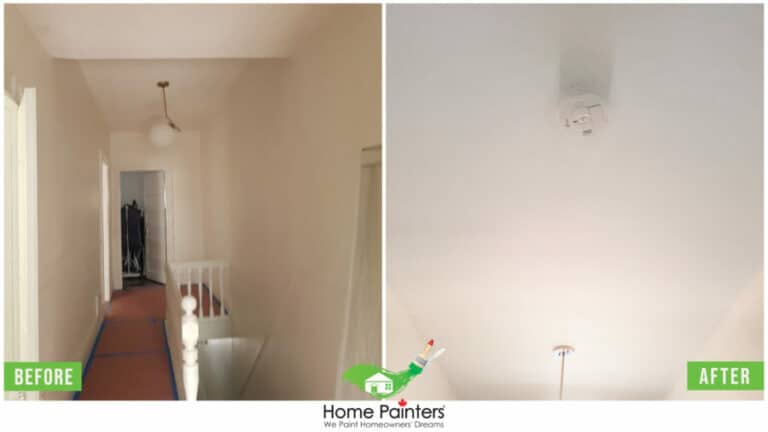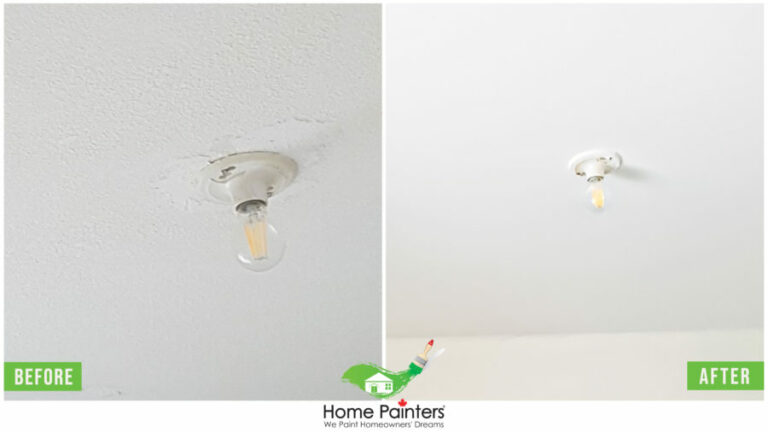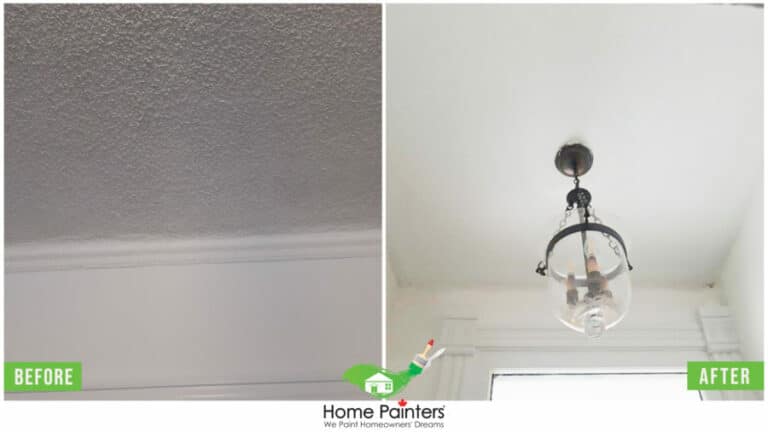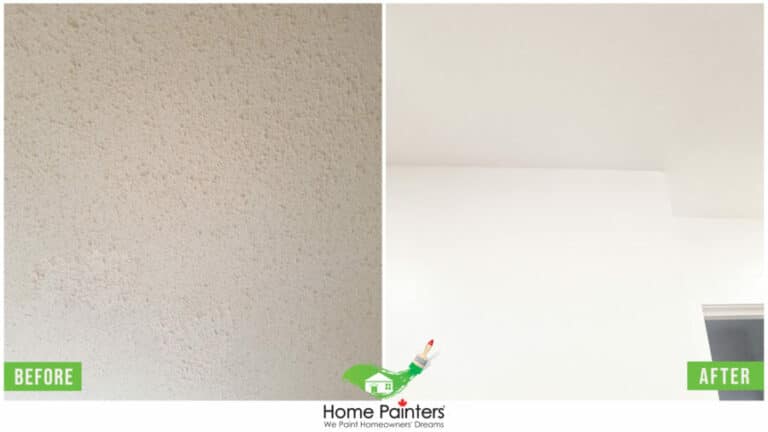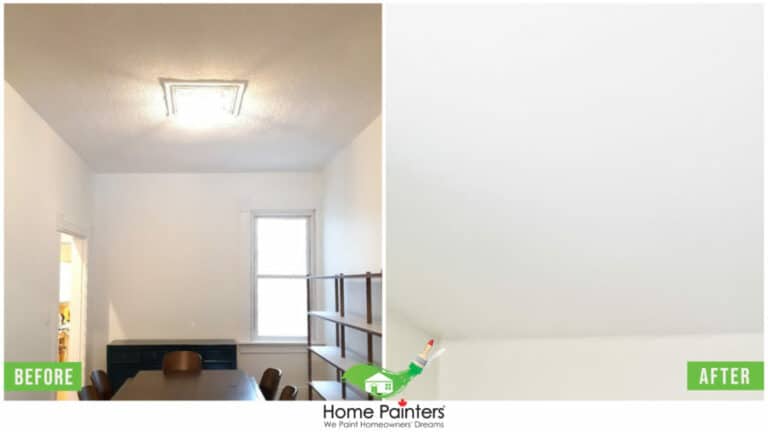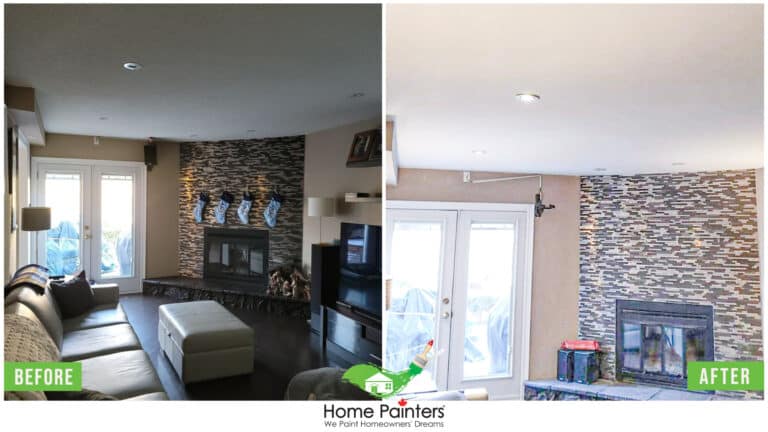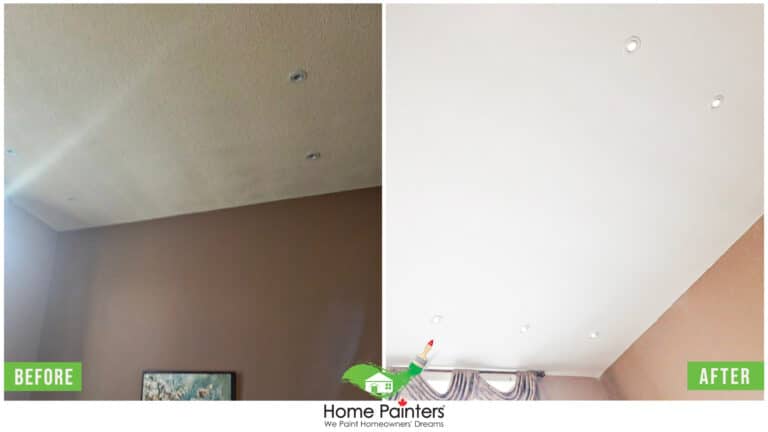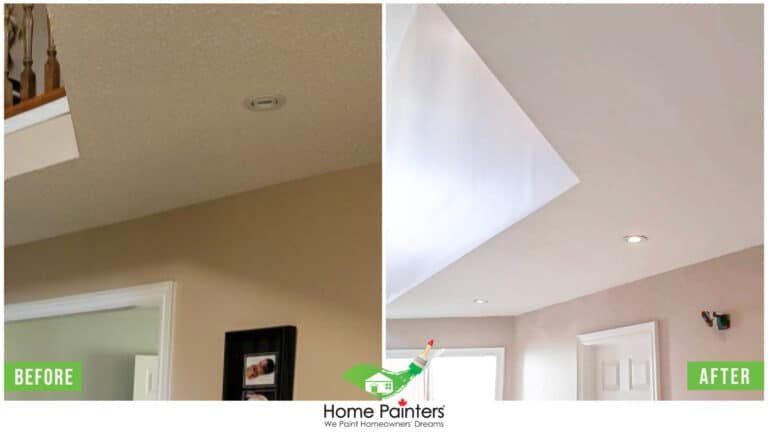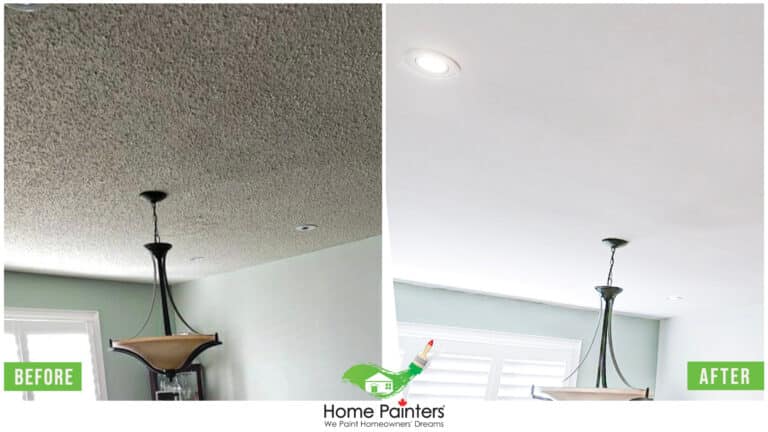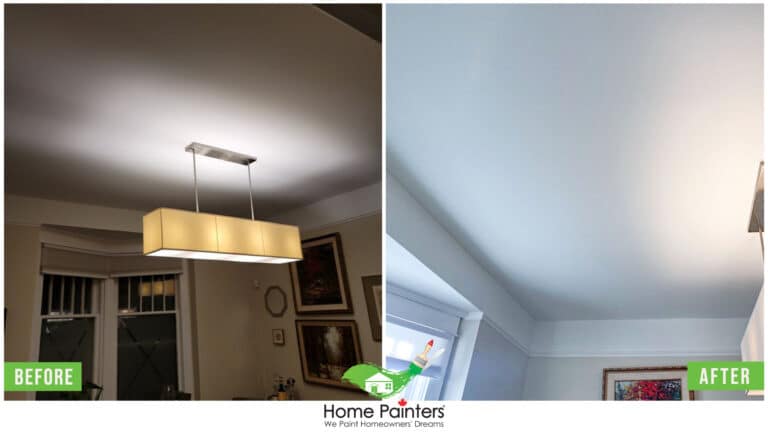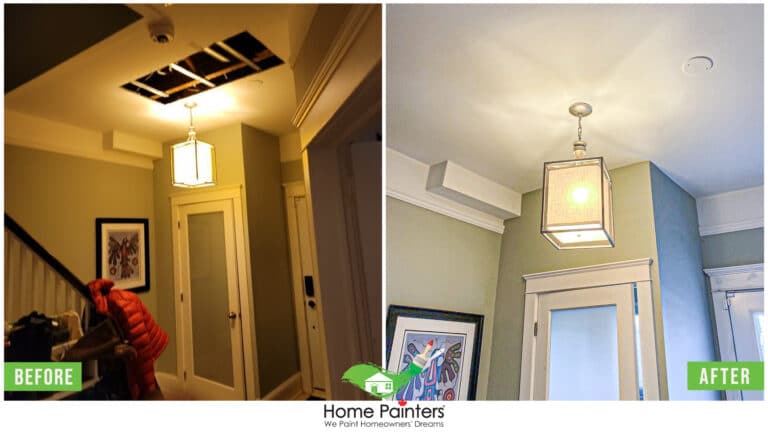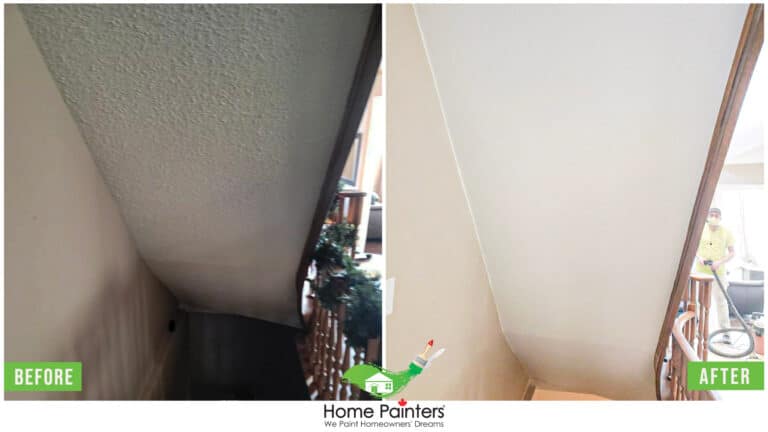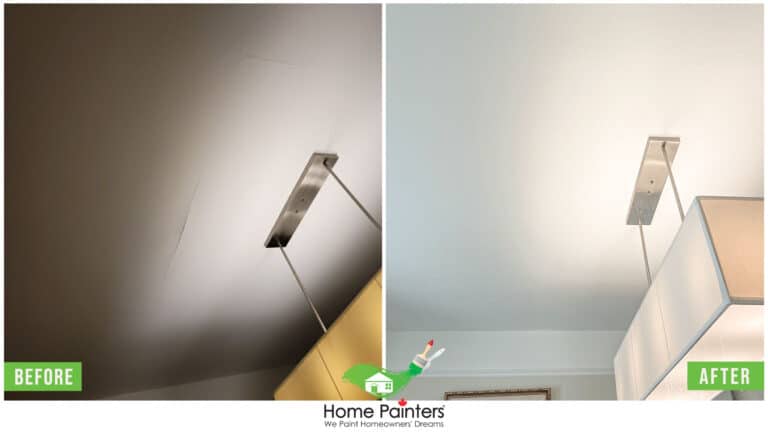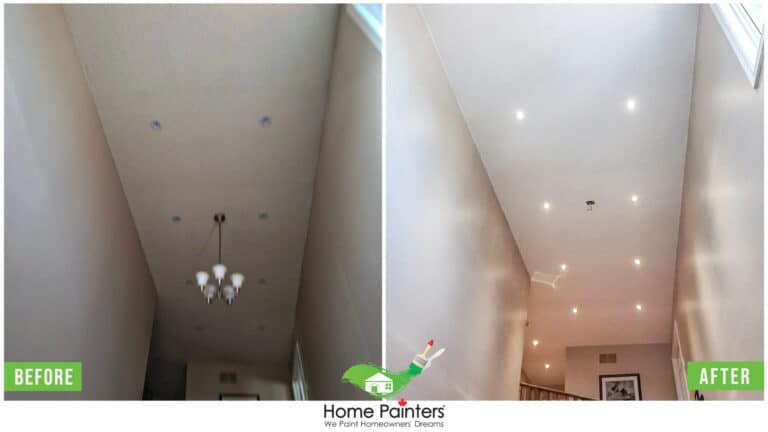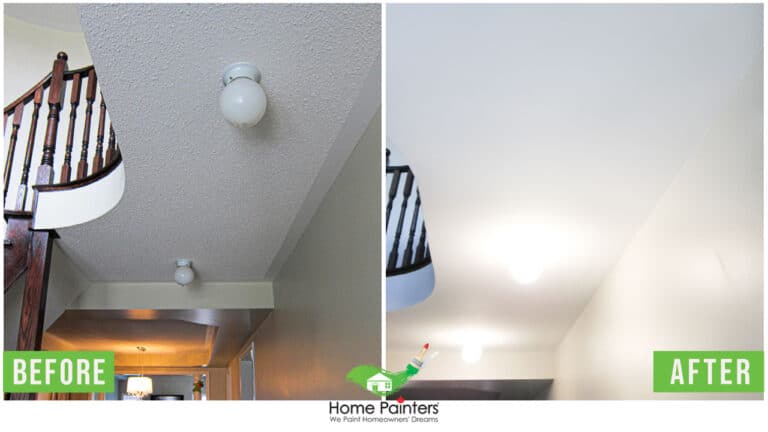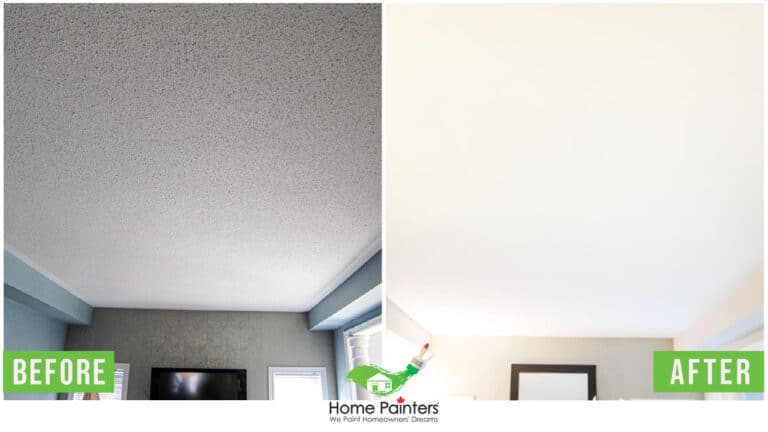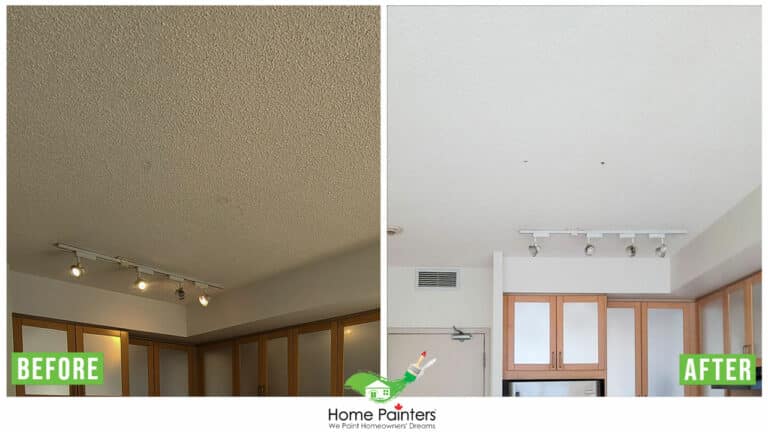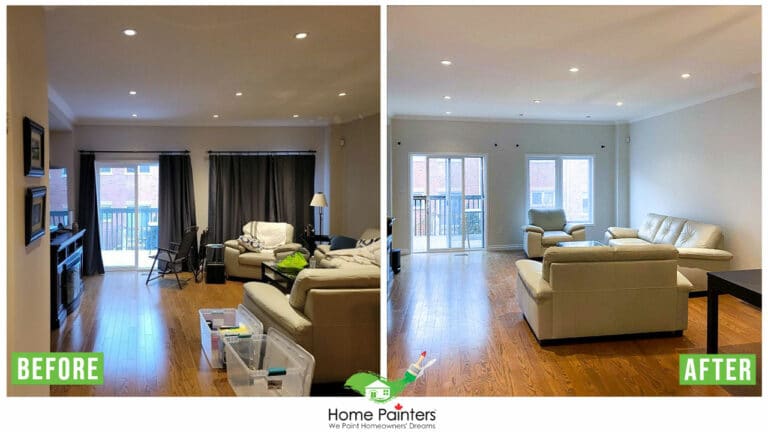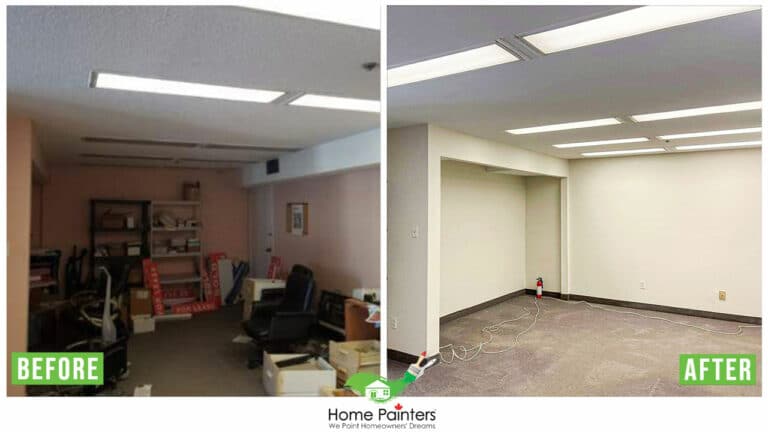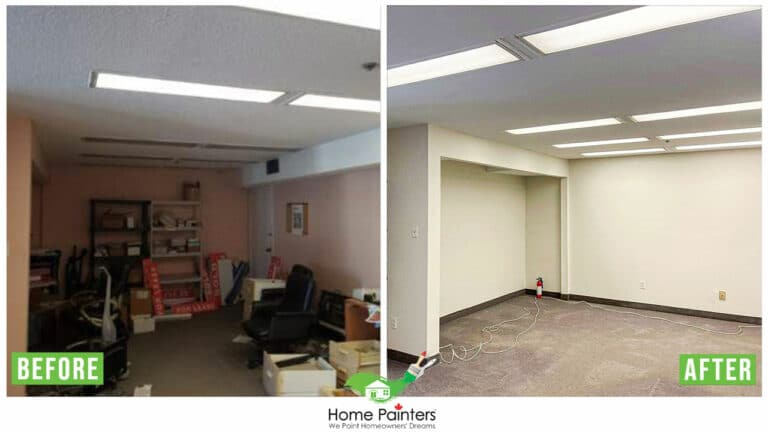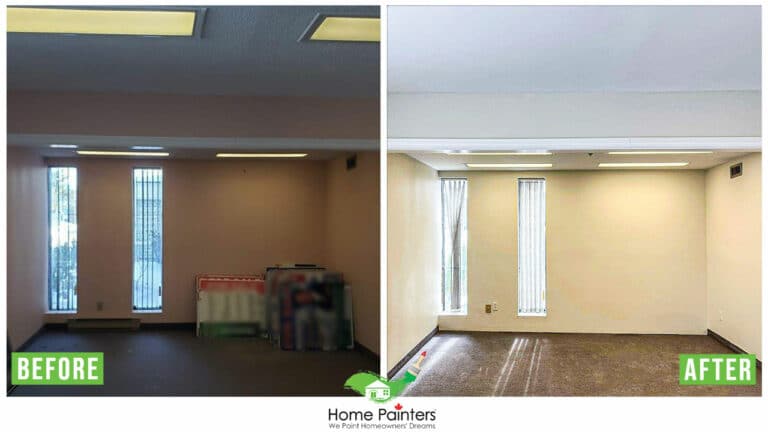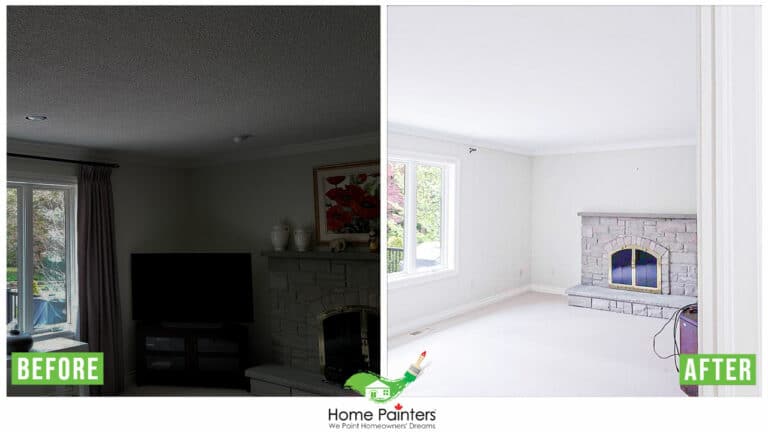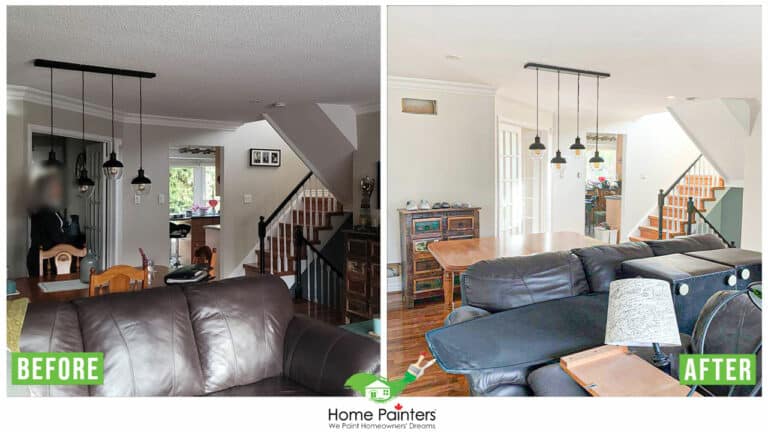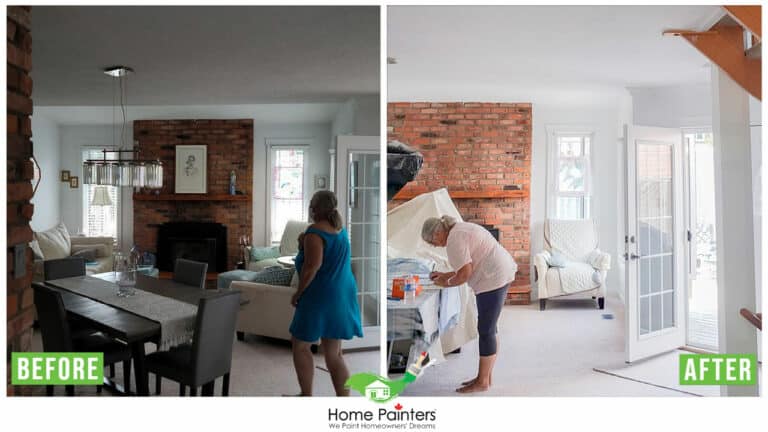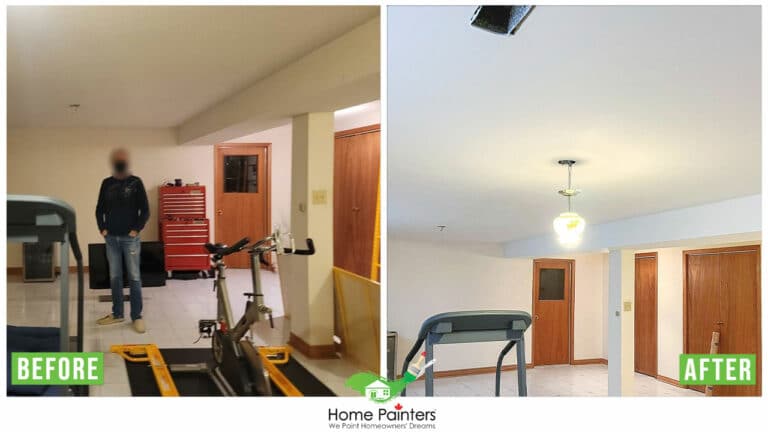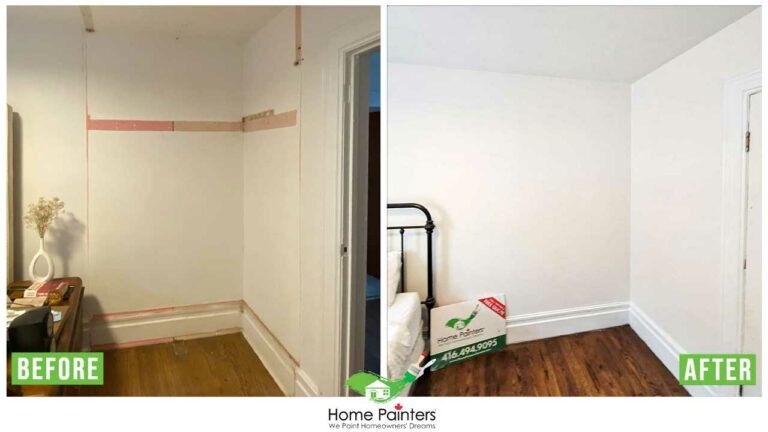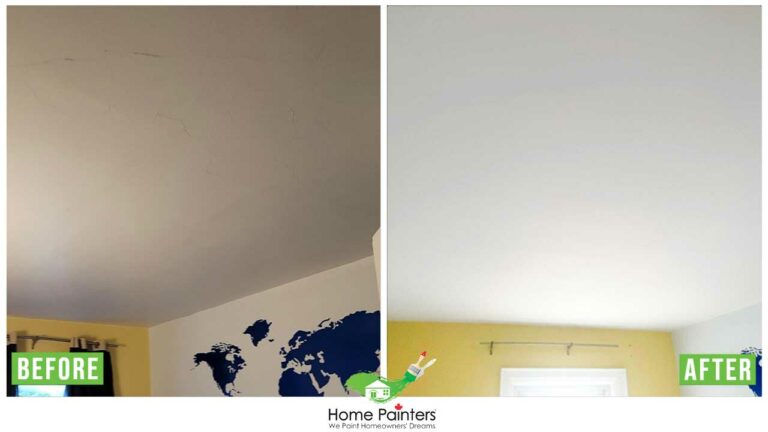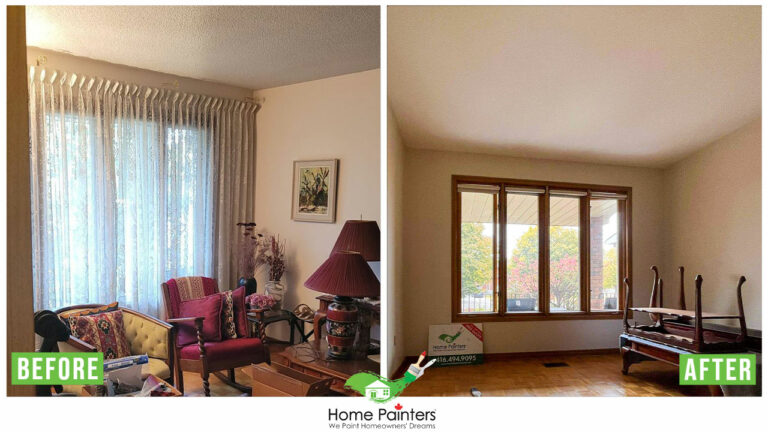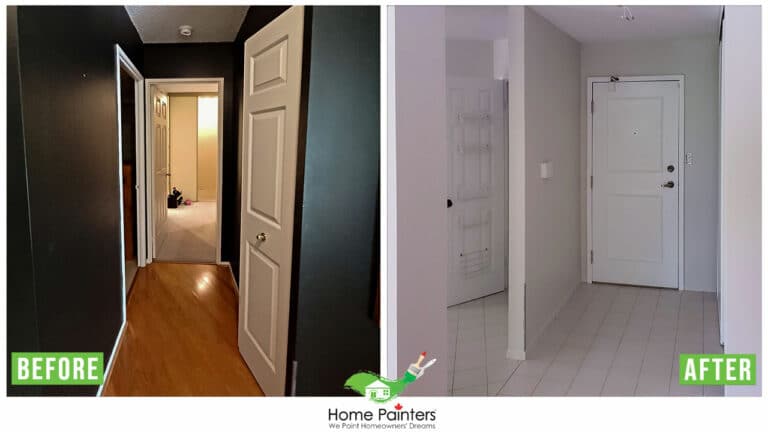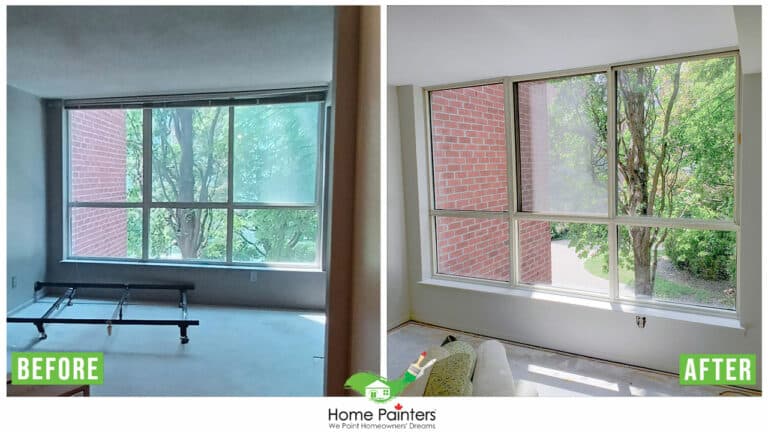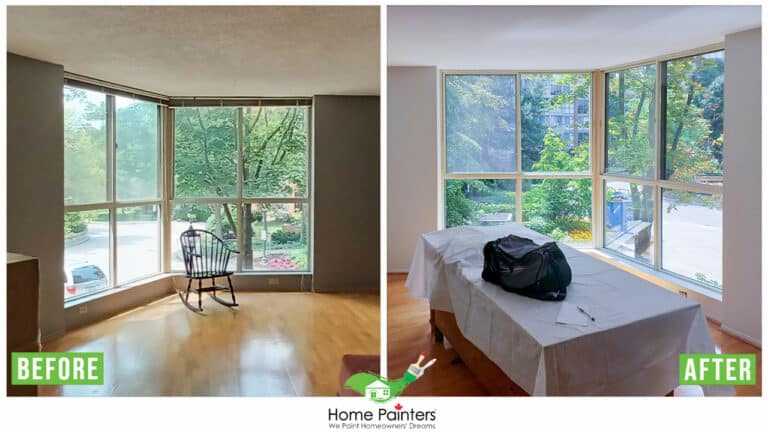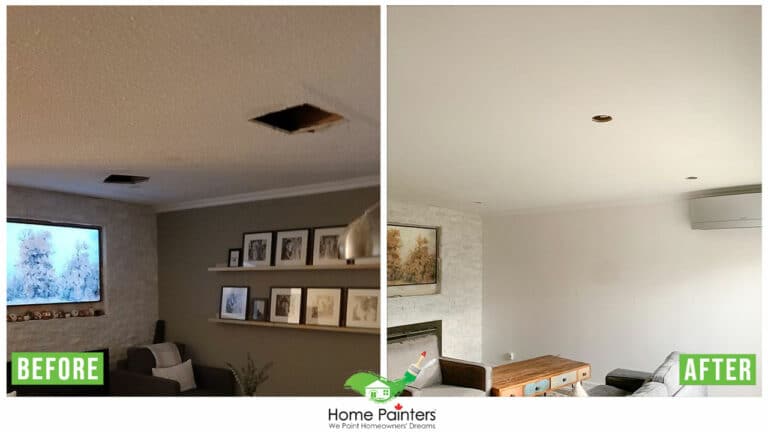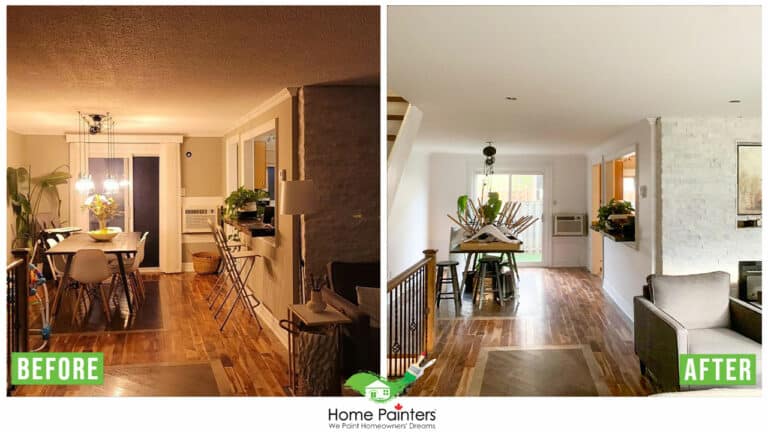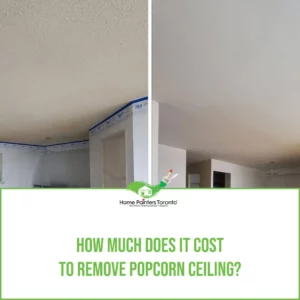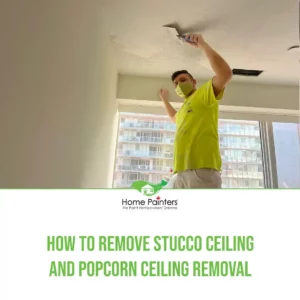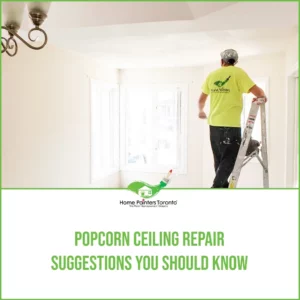
When you’re considering popcorn ceiling removal, there are a few questions you might have about the process. We’ve put together this list of the top four questions we hear from homeowners and answered them in detail!
Popcorn ceilings (aka textured ceilings or stucco ceilings) were very popular from the 1950s to the 80s. It was an easy method for builders to hide imperfections on ceilings. Although very popular during those times, this was during a period when asbestos was a high-demand material in America. The popcorn ceiling typically has 1 to 10 percent asbestos.
To find out if your ceiling contains asbestos, you can purchase a test kit or hire a company that deals with these sorts of problems. If you go with buying a test kit, you will need to collect a sample of your ceiling and mail it to a lab. Hiring a professional company is much safer and they can sort it out legally (in terms of disposing of it safely). Hiring a company would be more expensive, but better safe than sorry, right?
Let’s take a deeper dive into this!
Topics / Questions Covered in This Blog:
1. Do All Popcorn Ceilings Have Asbestos?
- Is Asbestos in Popcorn Ceilings Dangerous?
- Tips for Functioning with Asbestos Popcorn Ceiling
2. What is so Bad About Popcorn Ceilings?
- Is Popcorn Ceilings Really That Bad?
Steps to Remove Popcorn Ceiling
3. What is the Popcorn on the Ceiling For?
- When Were Popcorn Ceiling Banned?
- Should I Keep My Popcorn Ceiling?
4. When Were Popcorn Ceilings Banned?
- Advantages and Disadvantages of Popcorn Ceilings
1. Do All Popcorn Ceilings Have Asbestos?
During the 1950s to the 80s, asbestos was seen as a “wonder material,”. In that, it was durable, lightweight, and inexpensive. Also, it could be added to many materials as a fire-proofer (non-flammable). Aside from all these great features, asbestos has been found to cause serious health problems and has sadly claimed the lives of people it was supposed to protect. So, in 1977, the U.S. government banned the use of asbestos in ceilings and most ceilings installed after this date, would not contain any asbestos. So, yes, most popcorn ceilings have asbestos, especially if they were installed before 1977 or the ban.

Is Asbestos in Popcorn Ceilings Dangerous?
Asbestos is not actually dangerous when it is left undisturbed. So, homeowners are not at risk of potential asbestos exposure. However, if your popcorn ceiling does contain asbestos, you can safely encapsulate it by painting it or texturing it over top. When does asbestos become dangerous?
They become dangerous when the microscopic fibres are released into the air and then inhaled or ingested. People who work with this type of building material are more likely to develop an asbestos-related disease. This includes chronic coughing, shortness of breath, phlegm and asbestosis. In very serious cases involving asbestos, the fibres could cause cancerous tumors known as mesothelioma (hard to detect, can spread quickly throughout your body). Mesothelioma can take decades to develop after first exposure. This is why it is very difficult for mesothelioma patients to specify exactly where they got their exposure.
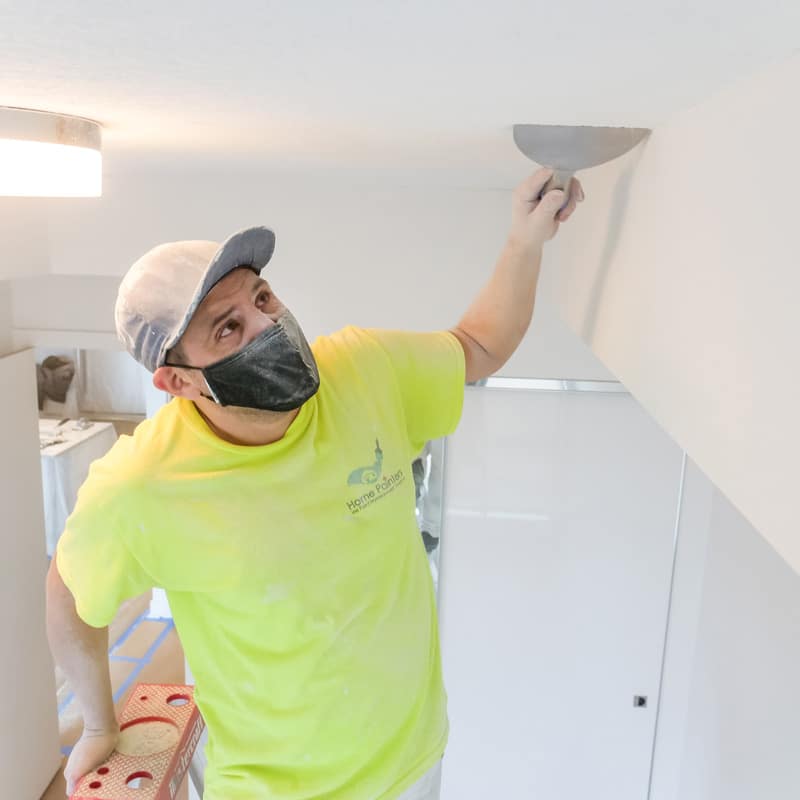
Popcorn Ceilings Popularity
The texture of popcorn ceilings was not the only reason why people loved it, but also the fact that it had visual and noise-dampening properties. Popcorn ceilings were embraced due to these elements: concealing imperfections, absorbing echoes and noise, and covering unfinished ceilings. This was why popcorn ceilings were widely used in homes from the 1930s to the 90s and why it was deemed as the “wonder material.”
Tips for Functioning with Asbestos Popcorn Ceiling
- Do not disturb the ceiling by any means! No nailing, screws, or tape.
- If placing shelves, do not place them high enough that it may affect the ceiling by accident.
- Make sure children do not throw pillows or their toys in the direction of the ceiling.
- Be careful not to scrape the ceiling when moving furniture or any long objects.
- If you have a bunk bed and it might graze the ceiling, do not put the bunk bed in a room with an asbestos popcorn ceiling.
- If the ceiling starts to peel because of age or dampness, it must be removed or encapsulated. (Encapsulation means covering asbestos so it does not release asbestos dust).
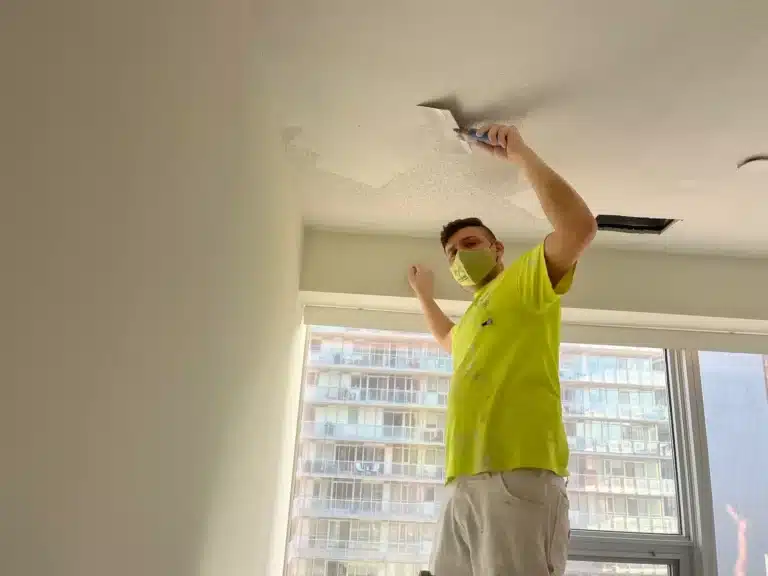
2. What is so Bad About Popcorn Ceilings?
Many people have a hate/love relationship with popcorn ceilings (sometimes called acoustic or textured ceilings). This is because popcorn ceilings resemble cottage cheese, in that once it is sprayed or painted on, it leaves a bumpy look. Also, some people find it visually displeasing. Why would a homeowner want to install popcorn ceilings? Well, they may want to because they don’t want to finish their ceiling or they couldn’t hide the imperfections of it, thus they left it there. Another reason why homeowners dislike popcorn ceilings is because of the potential asbestos problems. If you want to remove the asbestos, you should definitely enlist the help of professional painters. So, what is so bad about popcorn ceilings?
Let’s dive in!
Is Popcorn Ceilings Really That Bad?
What is so bad about popcorn ceilings? Some people believe that popcorn ceilings containing asbestos are extremely dangerous, which is definitely true. It is a safety hazard. If we go back to the 1950s to the 70s, most popcorn ceilings had asbestos.
However, these ceilings emit no vapours or fumes that can be inhaled. If you cover it with paint and you don’t breathe in the dust, you will not be exposed to anything toxic. In terms of its attractiveness, it really does depend on the person and the type of aesthetics they like. Some people do find it unattractive because if your popcorn ceiling has had a few roof leaks plus the fact that it has been painted on, it starts to look funky. I think the biggest pro about popcorn ceilings is that they can hide any imperfections, which in turn could boost your home resale value.
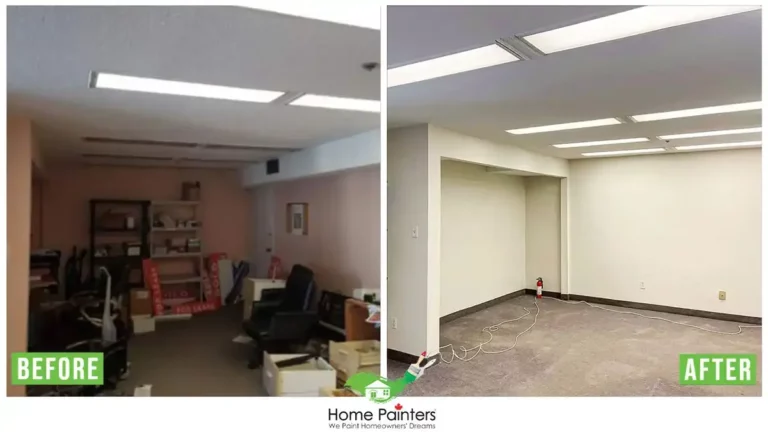
Pros and Cons of Popcorn Ceilings
While some people are sour on popcorn ceilings, others are not. Having popcorn ceilings means that it is an inexpensive way of hiding the flaws in a ceiling, includings cracks and leaks. Also, it is easy and cheap to install and because of their acoustic properties, popcorn ceilings cut down on sound in high-traffic areas, such as entryways and hallways. Aside from the possibility of asbestos being a big problem, another con of popcorn ceilings is that it does not handle moisture well.
In a kitchen or bathroom, places that have a high amount of moisture development, the texture of a popcorn ceiling can loosen, therefore it can eventually come down. Not to mention that popcorn ceilings can collect dust, cobwebs, and dirt. Causing it to be a big downgrade for aesthetics. It has “crater-like surfaces,” so it casts harsh shadows, making your room(s) appear smaller than it really is. In addition, it’s hard to keep popcorn ceilings clean because of its harsh texture. If you do end up removing your popcorn ceiling, it can make your home much more vibrant.
Steps to Popcorn Ceiling Removal
- Scrape your ceiling to see how to remove it. Make sure it is dry, then dampen it with water and try again. Although some textures are best taken off without wetting, it is better to wet it. If the wetting does not work, you may have a tough scraping job on your hands.
- If your stucco ceiling was installed before 1980, there is a good chance it contains asbestos (familiar cause of lung cancer). It is highly recommended contacting your local health provider for a sample test. If the test comes back positive. you will need to cover your stucco ceiling with new drywall.
- This entire task is due for a messy home! It is important to cover all furniture and walls before the popcorn ceiling removal. Cleaning up is easier using plastic cloths because you can tidy up and throw it straight in the trash. You should leave the cloth on the floor for when small pieces from the ceiling drop.
- Remove all furniture from the room you are in. If that is not possible, cover all the furniture with drop cloths, so it does not get ruined.
- If you have ceiling fans, please get rid of it for this process.
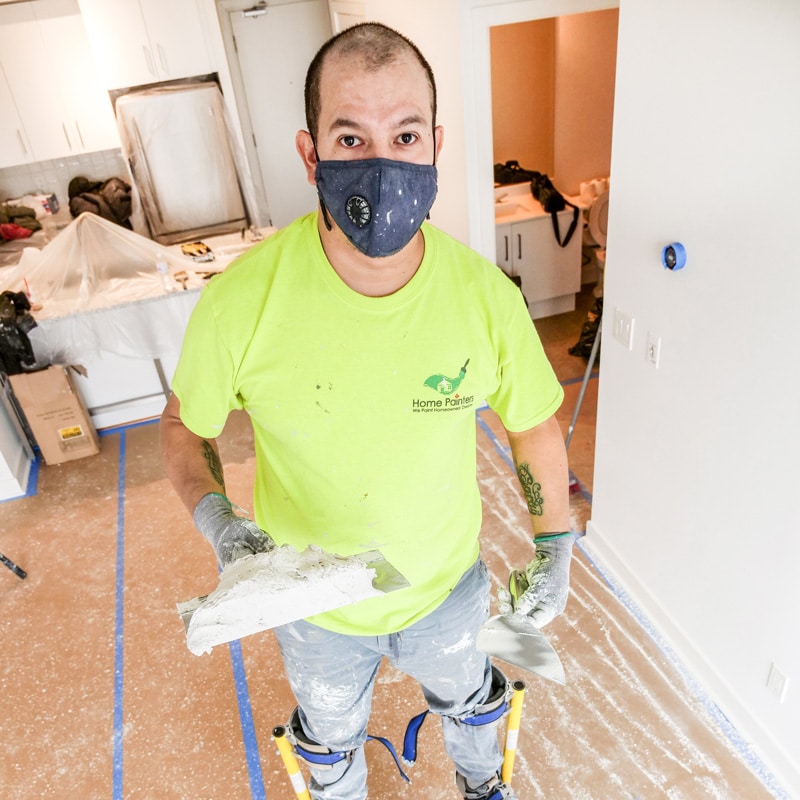
Final Steps
- Use a water pump sprayer to wet the ceiling. Let it soak for about 15 minutes before scraping. Don’t spray too much water, as it could harm the drywall and loosen the tape. If the texture is not soft after 15 minutes, try spraying it again.
- Cover all electrical boxes in the ceiling to avoid getting injured (turn it off first). Use painter’s tape to keep the wires dry.
- Do not try to do too much (I know it’s always in our nature to do so). Work in small areas, usually 4×4 feet. If you work in a larger area, the stucco ceiling may dry before you get the chance to scrape it off. In the event that happens, you would need to respray the area and wait another 15 minutes.
- Work with a mud pan to catch the popcorn bits before it touches the floor. You can get a mud pan at most hardware stores.
- Just scraping won’t help you keep your ceiling paint ready. You will have small gouges to fix. Sanding the ceiling will make it smooth before you have to paint.
As with anything in life, there are always going to be pros and cons. In this blog, we have listed the pros and cons of popcorn ceilings and just how bad it could possibly be for your home. Ultimately, the choice always belongs to the homeowners. If you are undecided about anything related to popcorn ceilings, you could enlist the help of professional painters to guide you.
3. What is the Popcorn on the Ceiling For?
Popcorn ceilings (aka textured ceilings or stucco ceilings) were very popular from the 1950s to the 80s. It was an easy method for builders to hide imperfections on ceilings. Although very popular during those times, this was during a period when asbestos was a high-demand material in America. Popcorn ceiling typically has 1 to 10 percent asbestos. To find out if your ceiling contains asbestos, you can purchase a test kit or hire a company that deals with these sorts of problems. A question that gets asked a lot is what is the popcorn on the ceiling for? It’s a great question, so let’s answer that for you and the overall importance of popcorn ceilings.
When you look at a popcorn ceiling, let’s face it: they’re eyesores. The worst part of it is that they are sometimes called “cottage cheese” ceilings. That says a lot, don’t you think? As mentioned above, popcorn ceilings were very popular in the mid-to-late 20th century. What is the popcorn on the ceiling for? Builders installed the popcorn material to help absorb sound from above and to cover up imperfections in the ceiling. So, if you decide to paint over it, its flaws would be invisible. Its sound-deadening properties are what made it so vital for many homeowners.
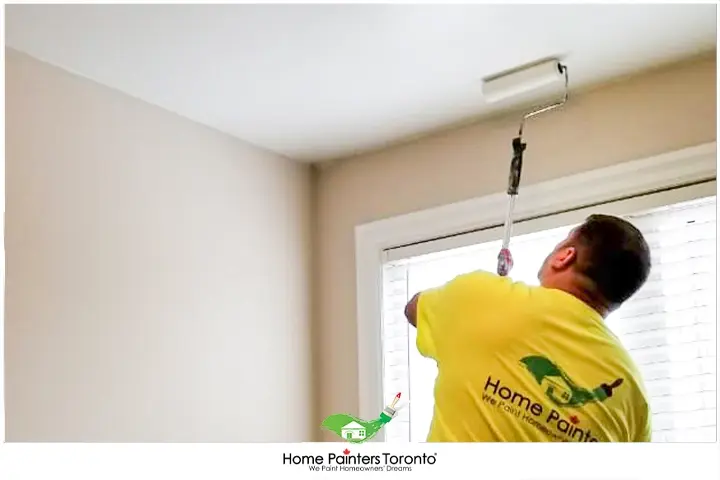
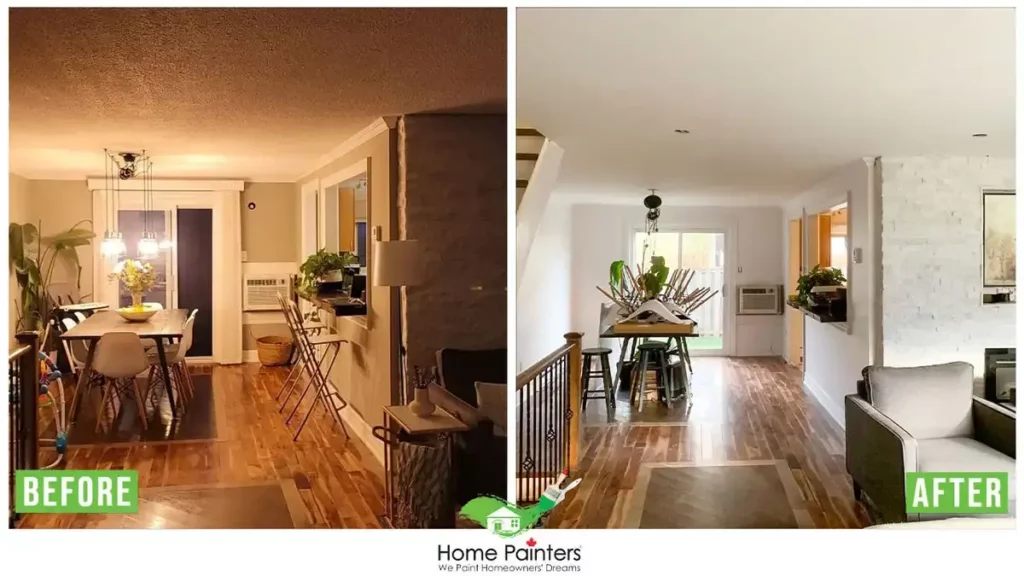
Should I Keep My Popcorn Ceiling?
This really depends on how you view your ceiling and the type of aesthetics you prefer for your home. If you find that your popcorn ceiling is visually appealing and you love the sound-deadening properties, by all means you should keep it. However, if you find it visually unappealing and are scared of the possible asbestos, you should get rid of it. It really depends on preference. It is important to note though, that if the ceiling is intact, then you are not in danger of inhaling asbestos, so the ceiling is of no harm to you. Also, if your popcorn ceiling is damaged in any way, it’s best to remove the entire ceiling throughout your house.
What To Do If Your Popcorn Ceiling Has Asbestos?
What do you do if your popcorn ceiling has asbestos? Any amount of asbestos is a safety hazard, first and foremost. You must make sure nothing disturbs the popcorn ceiling. Then, you have to decide if you want to remove it or encapsulate it. Don’t forget, popcorn ceiling removal containing asbestos is not an easy process by any means. It requires many precautions. If we are being honest, it’s a job best for qualified professionals in this field. Also, popcorn ceilings are a friable material, meaning it is very easy to damage it. Inhaling asbestos dust can lead to serious diseases like lung cancer and mesothelioma.
4. When Were Popcorn Ceilings Banned?
Many people have a hate/love relationship with popcorn ceilings (sometimes called acoustic or textured ceilings). This is because popcorn ceilings resemble cottage cheese, in that once it is sprayed or painted on, it leaves a bumpy look. Also, some people find it visually displeasing. Before attempting any home renovation project for a popcorn ceiling, you need to determine whether its material makeup smay be a safety hazard. For instance, asbestos is a real safety hazard when it comes to popcorn ceilings. Asbestos is an occurring fibrous silicate material and was the material of choice for popcorn ceilings. In this blog, we will discuss when were popcorn ceilings banned and everything you need to know about them.
Let’s dive in!
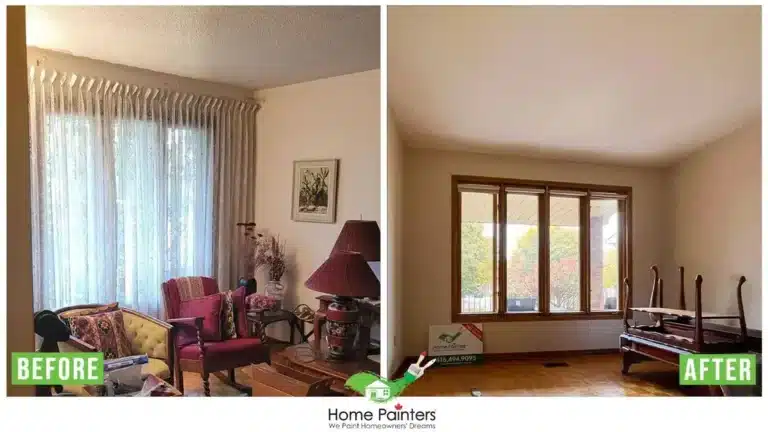
When Were Popcorn Ceiling Banned?
It was banned as a health hazard in 1978. Manufacturers then switched to paper fiber that year, but suppliers were still selling asbestos-laced materials in stores. This meant that popcorn ceilings installed as late as the mid-80’s could possibly contain asbestos. And if disturbed, it could cause life-threatening diseases, like lung cancer, hence why it was banned in 1978.
For those of you wondering, you can test if a popcorn ceiling contains asbestos by carefully scraping a small sample into a plastic bag and having it tested at an EPA-accredited lab.
Homeowners are allowed to remove a popcorn ceiling that contains asbestos. But it is much better if you call a professional asbestos company to do the job for you. It will be a lot safer for you and they can dispose of it in a safe and legal way.
Advantages and Disadvantages of Popcorn Ceilings
While some people are sour on popcorn ceilings, others are not. Having popcorn ceilings means that it is an inexpensive way of hiding the flaws in a ceiling, includings cracks and leaks. Also, it is easy and cheap to install and because of their acoustic properties, popcorn ceilings cut down on sound in high-traffic areas, such as entryways and hallways. Aside from the possibility of asbestos being a big problem, another con of popcorn ceilings is that it does not handle moisture well.
In a kitchen or bathroom, places that have a high amount of moisture development, the texture of a popcorn ceiling can loosen, therefore it can eventually come down. Not to mention that popcorn ceilings can collect dust, cobwebs, and dirt. Causing it to be a big downgrade for aesthetics. It has “crater-like surfaces,” so it casts harsh shadows, making your room(s) appear smaller than it really is. In addition, it’s hard to keep popcorn ceilings clean because of its harsh texture. If you do end up removing your popcorn ceiling, it can make your home much more vibrant.
Bonus Question: How much Does Popcorn Ceiling Removal Cost?
Price List for Popcorn Ceiling Removal in Toronto:
- The cost ranges from $6 to $10, plus the applicable HST, per square foot.
- The price for a single room is $1,995 plus HST. This price is for one room only. (TIP: Save by doing 2 rooms or more.)
- If 2 or more rooms: $800 to $1,100 plus HST per room
- For a 1500- to 1800-square-foot house, the main floor and hallway will probably cost between $4,000 and $6,000 plus HST.
- Price range for a two-story house with 1500 to 1800 square feet: $8,000 to $13,000 +HST (includes materials and labour).
Popcorn Ceiling Removal Before and After
More Interesting Blogs Related to
“Top 4 Questions About Popcorn Ceiling Removal”
If you reside in Toronto and the GTA and need some help figuring out the popcorn ceiling costs per square foot, don’t hesitate to call us! We will help you pick the colours you want and show you the latest painting and home renovation trends. Our home painting services with the best pro painters have been around now for over 36 years. Call 416.494.9095 or email [email protected] for a FREE quote for your home painting needs. And don’t forget to check us out on our social media channels below!


